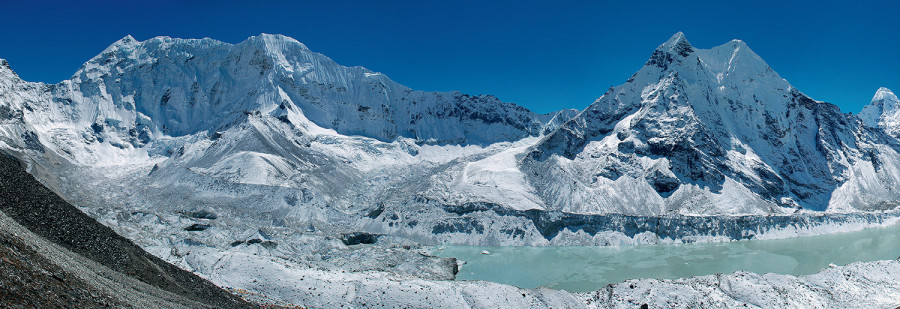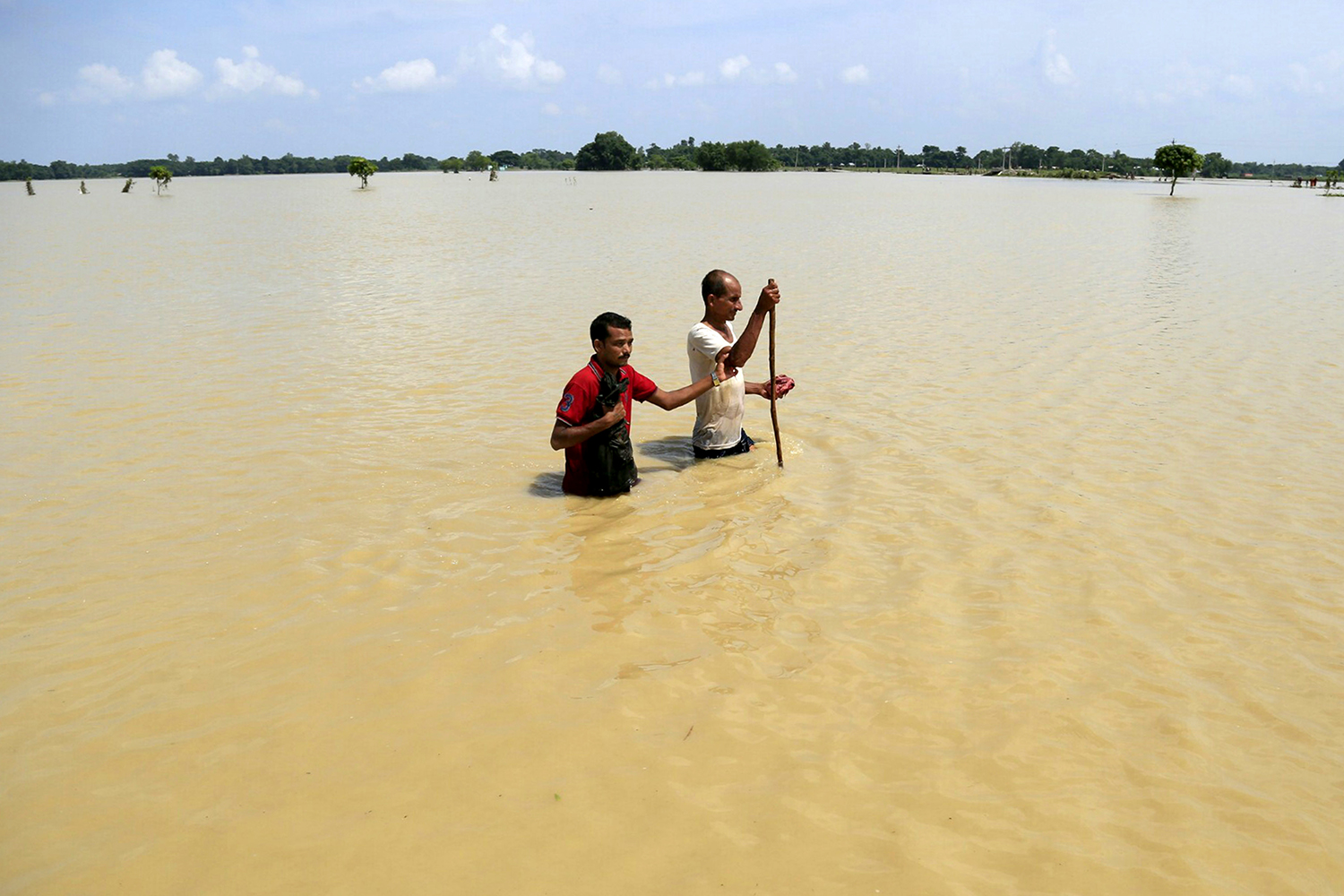Climate & Environment
What you need to know about how the changing climate could impact Nepal
From droughts in Upper Mustang to floods in the southern plains, there are indications all around that the country is already dealing with adversities created by climate change.
Chandan Kumar Mandal
Scientists have warned that 2019 is likely to be the hottest year in history. Last month was the hottest June ever recorded on earth. Scientists predict the month of July is likely to be the warmest July in history as well. The year 2018 was the fourth warmest year on record. All this is not a sudden happening.
Scientists describe this rise in average temperature of the earth’s climate system as global warming. Others refer to global warming as the rise in temperature of earth’s surface and its associated effects on humans, animals and nature.
In recent years, Nepal has fallen under the list of countries that are facing the brunt of a changing climate and its associated impacts despite doing little in the past or present to amplify global warming. Here is what you need to know about the urgency of climate change and how it could impact Nepal.
What is causing climate change?
Earth’s climate has undergone changes for centuries since the Ice Age. However, since the Industrial Revolution, the climate has seen unprecedented changes, including a greater rise in temperatures. Scientists attribute this rise to an increase of atmospheric carbon dioxide (CO2), a major greenhouse gas. The change in climate is apparent in rising sea levels, excessive melting of polar ice and glaciers, warming oceans, more extreme weather events, as well as a greater risk of flooding, droughts and heatwaves.
According to studies, the earth’s temperatures over land and ocean have gone up by 0.8 degrees Celsius on average, as human activities continue to add more carbon dioxide and other earth-warming gases to the atmosphere. The latest IPCC 2018 report has projected that human activities like the burning of fossil fuels and deforestation are estimated to have caused approximately 1.0 degrees Celsius of global warming above pre-industrial levels. Global warming is likely to reach 1.5 degrees Celsius between 2030 and 2052, if it continues to increase at the current rate.
What are greenhouse gas emissions?
Greenhouse gases are present in the earth’s atmosphere and can trap heat from sunlight. These gases let sunlight pass through the atmosphere and let them reach the earth’s surface, but they block the heat from returning. Major greenhouse gases are water vapour, carbon dioxide, methane, ozone, nitrous oxide and chlorofluorocarbons. Greenhouse gases are not a problem in themselves though. Without these, the earth would be too cold for anything. However, an unprecedented rise in the presence of these gases through human activities has meant that the earth is getting warmer. Greenhouse gases are released into the atmosphere from the burning of fossil fuels for energy generation, chopping down forests which would otherwise absorb carbon dioxide, and agricultural sources such as the release of methane from livestock.
Who are the major contributors to greenhouse gas emissions?
According to global estimates, the five major emitters—the United States, the European Union, China, the Russian Federation and Japan—together contributed two-thirds of the world’s carbon dioxide emissions from 1850 to 2011. Developed countries used to be the largest emitters of carbon dioxide and other greenhouse gases, but emission trends have undergone a major shift as six of the top 10 emitters are now developing countries like China, which alone contributes to approximately 25 percent of global emissions, followed by India, Indonesia, Brazil, Mexico and Iran.
Is Nepal bearing the brunt of something we did not cause?
While major developed and developing countries are responsible for the emission of earth-warming gases, the lowest 100 emitters contribute less than 3 percent of global emissions. According to the UN study, Nepal is ranked the fourth most vulnerable country in terms of the adverse impacts of climate change. The country might be on the receiving end of the global crisis but it is following in the footsteps of early emitters, even though its emissions remain significantly low. Its cities, mainly the Kathmandu valley, have turned into an urban heat island in recent years because of anthropogenic activities.

How is climate change affecting Nepal?
The country is witnessing more disaster incidents. Last year, the number of disasters went up by more than 50 percent. The recent monsoon mayhem, which has killed over five dozen people, was caused by the country experiencing extreme rainfall, believed to be a sign of climate change. Nepal’s average minimum temperature has gone up by 0.056 degrees Celsius in the last four decades. The country is likely to witness a ‘hotter and wetter’ future, says one study. Rural areas in hilly regions are turning into ghost towns because people are migrating to urban areas after sources of water dried up.
Communities in Upper Mustang, like Samjong village in 2016, have been forced to relocate because of extended droughts. In another case, residents of Dhye village in Upper Mustang had to be resettled after crop production decreased and livestock started dying due to unseasonal snowfall.
All these are indications that the country is already dealing with adversities created by changes in the climate. With more districts becoming prone to floods, landslides, droughts, climate change is likely to cut down on food production, freshwater availability, and other resources.
With little capacity to fight approaching adversities, Nepal is likely to experience a harsh climate future. Global warming has already altered the temperature pattern in the country. The latest landmark study in the Hindu Kush Himalaya region, which covers 3,500 kilometres across Afghanistan, Bangladesh, Bhutan, China, India, Myanmar, Nepal and Pakistan, has projected an alarming future for countries like Nepal. The study concludes that that even the most ambitious Paris Agreement goal—of limiting global warming to 1.5 degrees Celsius—by the end of the century would lead to a spike of 2.1 degrees and the melting of one-third of the region’s glaciers.
Climate change-induced erratic rainfall, increasing temperatures and droughts will result in a decrease in overall agricultural yield. In Nepal, the late arrival of monsoon is directly linked with annual crop production, which is further linked with the country’s overall GDP. One study predicts that although climate change has already had negative effects on rice yields, by 2100, it could decrease the country's rice output by 4.2 percent.
What will the changing climate cost Nepal?
Nepal is already bearing the brunt of climate change disasters, facing huge losses in agriculture, and is instead pumping money to make vulnerable communities more resilient to climate change. A government report has estimated that major impacts and other economic costs of climate change will be equivalent to an annual cost of 1.5 to 2 percent of the country’s GDP.
How can we make the younger generation aware of the issues?
Madhukar Upadhya, a watershed management practitioner, suggests awareness campaigns around saving water. “Since all our activities and the impacts of climate change are somehow related to the availability of water, be it people migrating from rural to urban areas after drying up of water resources or crop failure due to shortages of water, the younger generation should be taught the science of saving water,” Upadhya said.
What initiatives is Nepal taking to cut emissions?
As a country with the potential for renewable energy, mainly hydropower, Nepal is diversifying its energy needs. The future development of clean energy via hydropower will reduce the country’s dependence on fossil fuels and ultimately cut down on greenhouse gas emissions. According to some estimates, a project like the Bhotekoshi 45MW hydropower project can alone reduce 160,092 tons of carbon dioxide emissions every year. Additionally, Nepal is also slowly introducing electric vehicles to make the transportation sector—one of the leading emitters through fossil fuel combustion—cleaner.
What do you think?
Dear reader, we’d like to hear from you. We regularly publish letters to the editor on contemporary issues or direct responses to something the Post has recently published. Please send your letters to [email protected] with "Letter to the Editor" in the subject line. Please include your name, location, and a contact address so one of our editors can reach out to you.




 18.12°C Kathmandu
18.12°C Kathmandu











